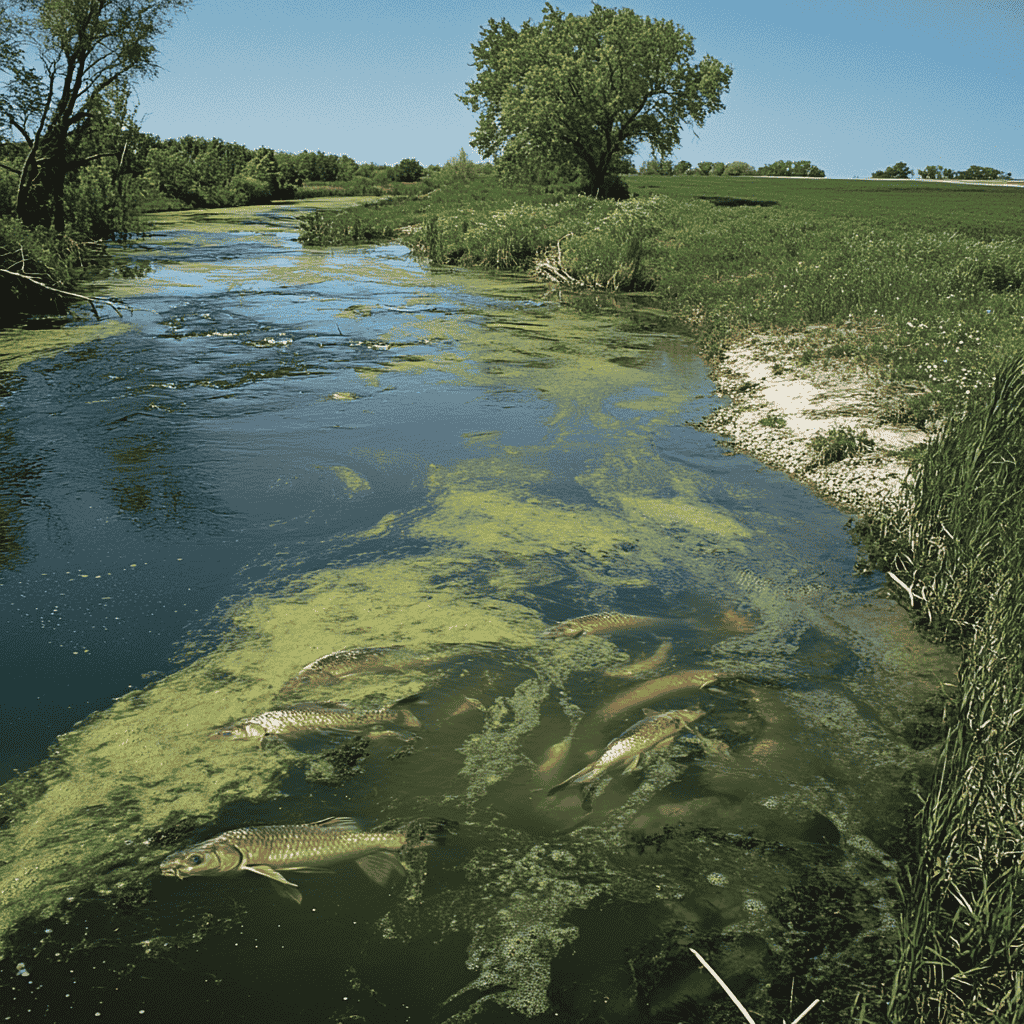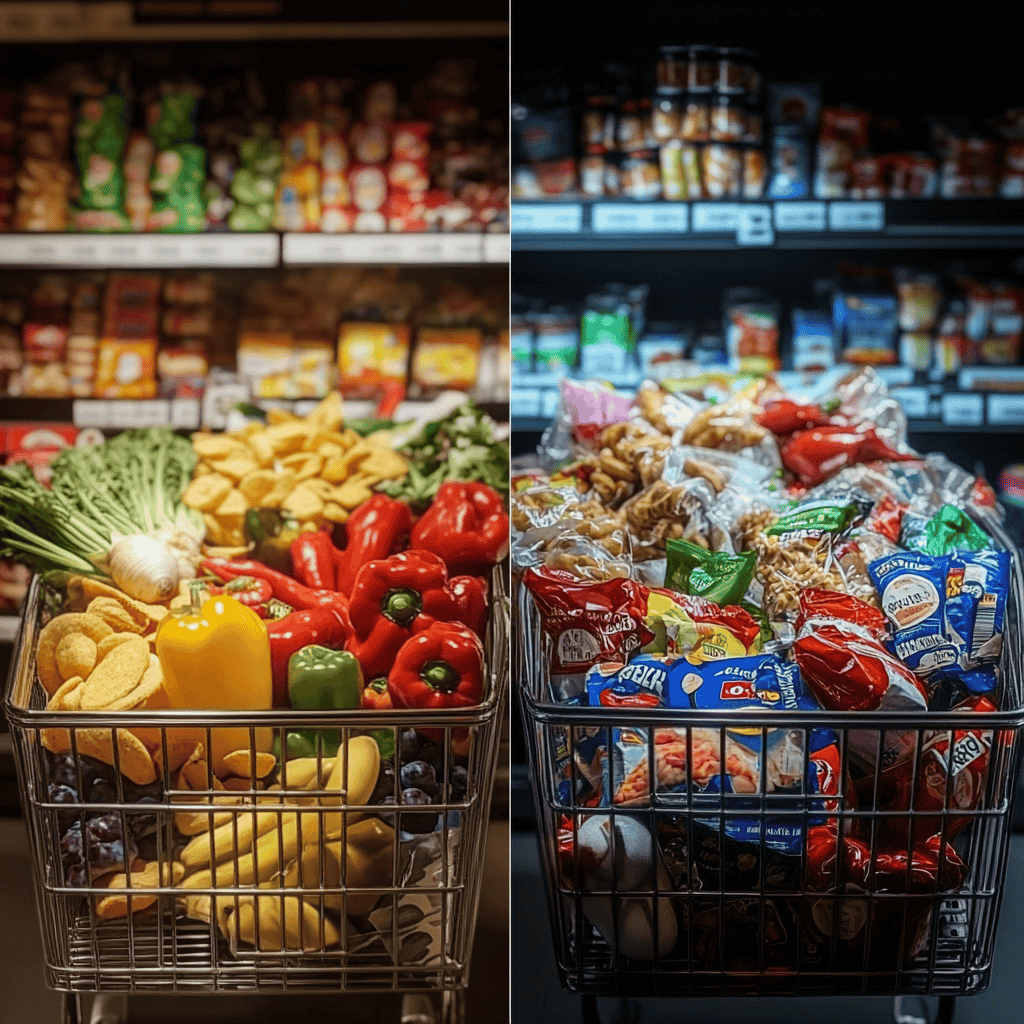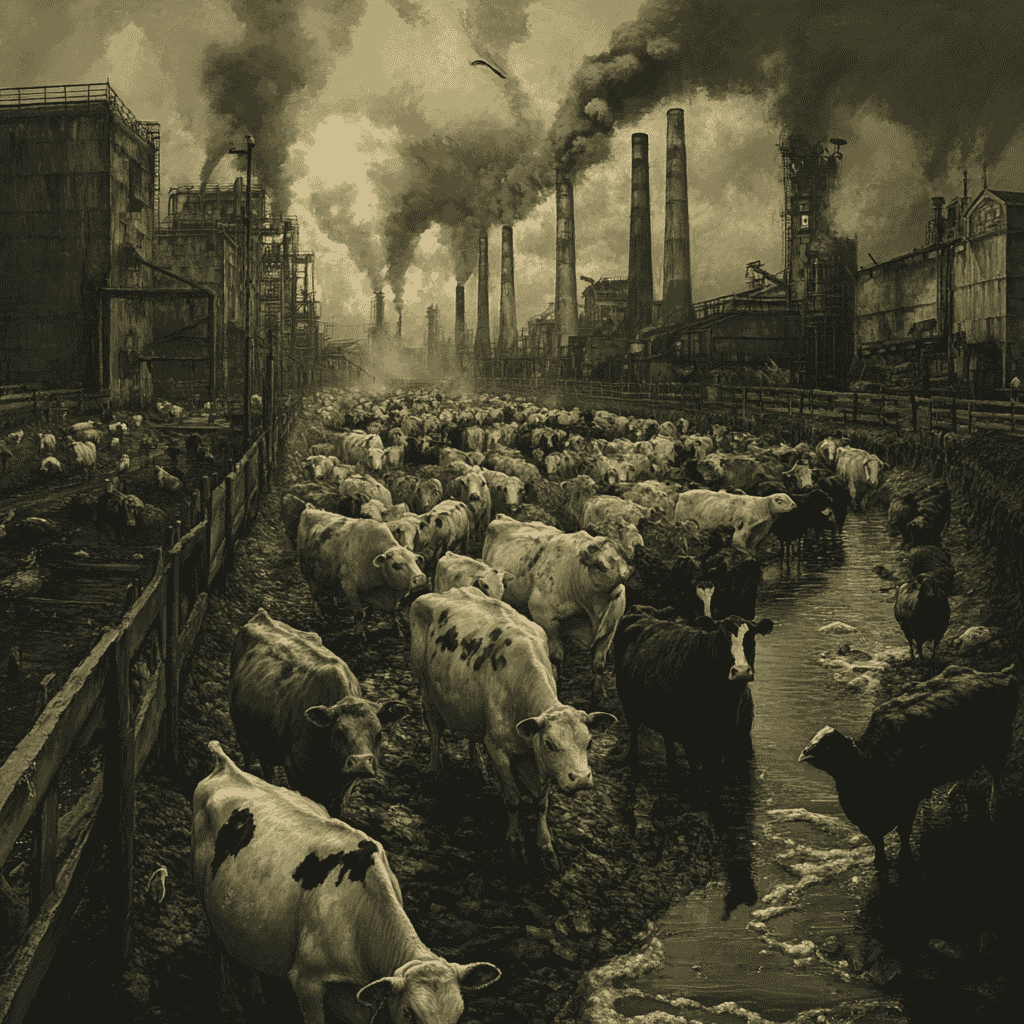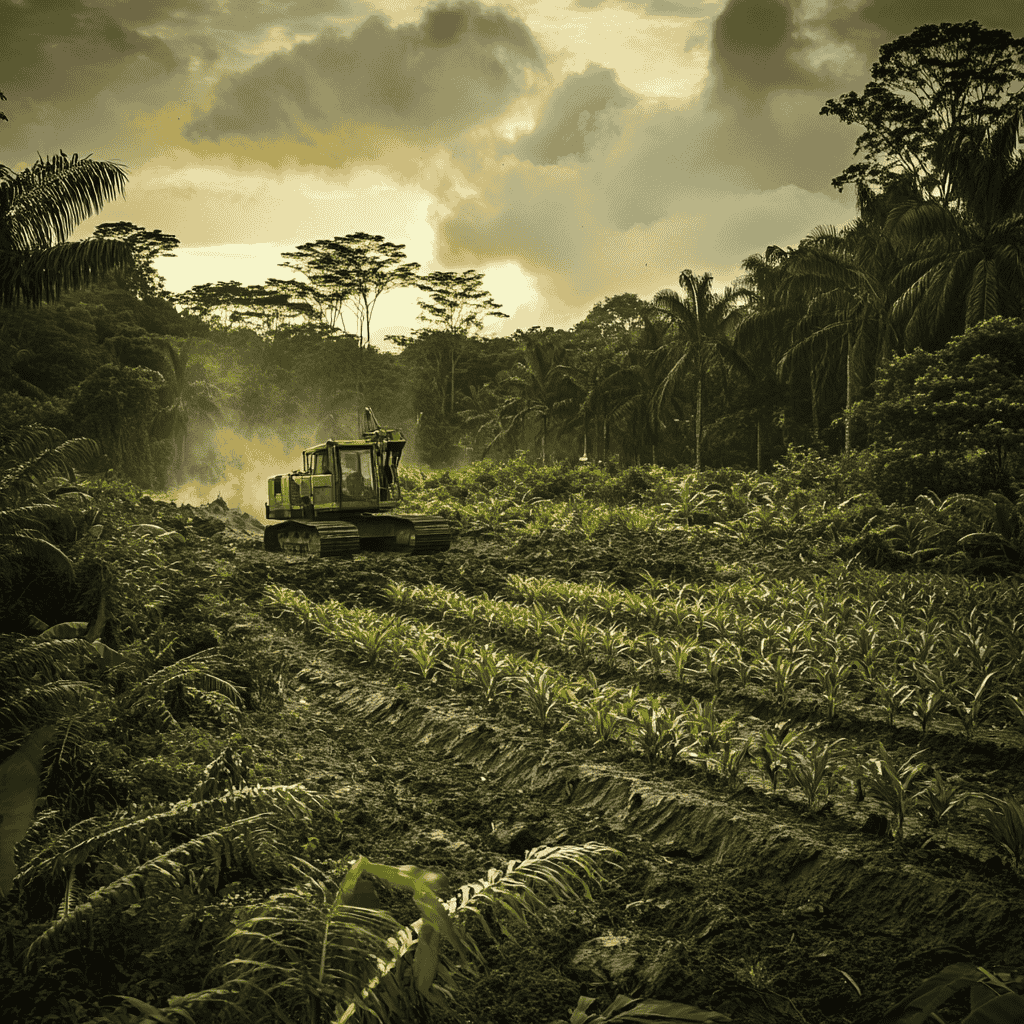The Toxic Food System: How It’s Fueling a Health Crisis
Current research studies suggest that our modern food system may be a leading contributor to the rising rates of chronic diseases. For example, autism rates have skyrocketed from 1 in 1500 in past decades to 1 in 36 children nationally, with rates as high as 1 in 22 in California.¹,²,³ Moreover, the obesity crisis affects 74% of American adults, with nearly 50% of children now classified as overweight or obese.⁴,⁵ These alarming numbers may be a symptom of a larger issue—our toxic food system. These alarming numbers may point to a multifaceted issue, with our toxic food system playing a significant role among other contributing factors.
Here’s the bottom line: our food system is broken. It’s fueling health problems, harming the environment, and deepening social inequality. From industrial farming practices to ultra-processed foods, the way we produce and consume food is making us sick. This article explores the harmful effects of industrial agriculture and processed foods on human health and the environment.
The Industrial Agriculture Model
Monoculture Farming: The Silent Soil Killer
Monoculture farming, where the same crop is grown year after year on the same land, has harmed the soil and significantly reduced biodiversity. This agricultural practice strips the soil of essential nutrients, forcing farmers to rely heavily on synthetic fertilizers to maintain productivity. Over time, the lack of biodiversity weakens the ecosystem, making it more vulnerable to pests and disease. These poor soil conditions can lead to inadequate crop nutrition, potentially impacting overall health. Research also suggests that exposure to certain pesticides, commonly used to counteract vulnerabilities in monoculture farming, may increase the risk of developmental disorders, including autism.6,7

Pesticide and Fertilizer Dependency
The extensive use of pesticides and chemical fertilizers in industrial farming is a cornerstone of modern agriculture. While these chemicals boost crop yields, they also carry significant health risks. Pesticides can accumulate in the human body over time, potentially causing long-term effects such as hormone disruption, cancer, and neurodevelopmental disorders, including an increased risk of autism in children exposed to high levels of certain pesticides during early development.6,7 Additionally, chemical fertilizers rich in nitrates can leach into groundwater and drinking water sources, leading to severe health impacts. One such impact is “blue baby syndrome,” a condition caused by high nitrate levels that interfere with oxygen transport in infants, posing serious health risks.8,9

Environmental Degradation
Industrial agriculture takes a big toll on the environment. In areas dominated by monoculture and large-scale farming, deforestation, habitat loss, and soil erosion are widespread. These practices strip the land of its natural ability to hold onto nutrients and water, causing long-term damage. Without protective plants, soil erodes faster, reducing fertile land and harming ecosystems.10
Water Pollution: The Hidden Threat
Agricultural runoff is one of the leading causes of water pollution. Fertilizers and pesticides from farms make their way into nearby rivers, lakes, and groundwater. The contamination not only harms aquatic life but also enters the human food chain, contributing to health problems ranging from gastrointestinal issues to more serious conditions such as neurotoxicity. These “poison food symptoms” arise from exposure to polluted water sources, further illustrating the dangers of industrial farming.11

Health Implications
Rising Autism Rates
The rise in autism rates is one of the most concerning public health trends of recent decades. Nationally, autism affects 1 in 36 children, with rates in California reaching as high as 1 in 22.1,2,3 This surge can be attributed not only to improved diagnostic tools but also to increased exposure to harmful chemicals in our environment and food systems. Studies have suggested a link between prenatal exposure to pesticides and an increased risk of developmental disabilities, including autism.⁶ Furthermore, the broader use of industrial agricultural practices may lead to poor nutrition and exposure to additional chemicals, potentially impacting long-term health outcomes.⁷

Chronic Diseases and Obesity
Processed foods are everywhere in our diets and play a huge role in the obesity crisis. Today, 74% of American adults and almost half of kids are overweight or obese.4,5 Packed with added sugars, unhealthy fats, and chemicals, these foods throw off our metabolism and lead to issues like diabetes, heart disease, and other metabolic conditions. The problem stems from an industrial food system that values quantity over quality, fueling this health crisis.

Diabetes: A Growing Epidemic
Nearly 50% of American adults are either prediabetic or have type 2 diabetes, with the number of teens at risk for prediabetes climbing to 30%.4,5 Processed foods and diets high in refined sugars have been identified as primary factors contributing to insulin resistance, which plays a significant role in the development of type 2 diabetes. The early onset of diabetes, which is becoming more common in younger populations, leads to a lifetime of potential complications, including cardiovascular disease and nerve damage.12

Infertility and Sperm Count Decline
The toxic food system is also impacting reproductive health. Infertility rates are rising by 1% annually, and sperm counts have dropped by 1% per year since the 1970s.13 Chemicals found in food packaging, pesticides, and processed foods have been linked to hormone disruption, which significantly affects reproductive health in both men and women.7,13
Young Adult Cancers
Cancer rates among young adults have increased by 79% in recent years.14,15,16 The rise in cancers can be attributed to both poor dietary choices and exposure to environmental toxins. Processed foods, laden with additives and preservatives, contribute to inflammation and oxidative stress, which increase the risk of cancer. Environmental toxins found in the food system also play a significant role in this rise.
Processed Foods and the Fast Food Phenomenon
Ultra-Processed Foods: A Key Contributor to Health Issues
Ultra-processed foods are a big part of today’s health challenges. They’re full of additives, preservatives, and artificial flavors that keep them fresh longer but strip away nutrients. Studies link these foods to major health problems like obesity, heart disease, and metabolic issues. While they’re convenient and affordable, they’re often loaded with sugars, fats, and salts that contribute to various chronic health conditions.12,22,23
Additionally, the consumption of ultra-processed foods has been associated with symptoms of food poisoning and long-term health impacts.22,23
Fast Food Culture: Fueling the Obesity and Diabetes Crisis
Fast food culture is deeply intertwined with the rise of ultra-processed foods. The global fast food industry, fueled by socioeconomic factors such as convenience and low cost, has worsened the obesity and diabetes crises. In many low-income areas, fast food may be one of the few affordable meal options. This has created a public health dilemma, as individuals in these communities are more likely to develop obesity, diabetes, and other diet-related conditions due to their reliance on unhealthy fast food options.5,24 With fast food spots everywhere, unhealthy eating has become the norm, fueling a cycle of health problems.

Health Effects: The Link to Chronic Diseases
Processed and fast foods are key drivers of metabolic dysfunction, which leads to diabetes, cancer, and heart disease. These foods often contain high levels of trans fats, sodium, and refined sugars, all of which disrupt the body’s ability to regulate insulin and maintain a healthy metabolism.17,18,19 Over time, these dietary patterns cause systemic inflammation, insulin resistance, and hormonal imbalances, increasing the risk of chronic diseases. The connection between processed foods and metabolic health issues is undeniable, as studies consistently link the rise of these foods to growing rates of diabetes and obesity.

Environmental Toll
Climate Change: Industrial Agriculture and Greenhouse Gas Emissions
Industrial agriculture is a leading contributor to greenhouse gas emissions, significantly driving climate change. The agriculture, forestry, and land use sectors account for 13% to 21% of global greenhouse gas emissions.11 This substantial carbon footprint stems from the large-scale use of synthetic fertilizers, methane emissions from livestock, and deforestation for farmland expansion.20 Notably, the manufacture and use of nitrogen fertilizers alone contribute about 5% of all global greenhouse gas emissions.20
Livestock, particularly cattle, further exacerbate the problem through enteric fermentation, which accounts for approximately 70% of agricultural methane emissions.21 The cumulative impact is staggering: the food system as a whole contributed 37% of total greenhouse gas emissions in 2020. Alarmingly, projections suggest this figure could increase by 30–40% by 2050 due to population growth and dietary changes, underscoring the urgent need for sustainable agricultural practices and food systems.22

Deforestation and Habitat Destruction
Farming, especially for livestock and crops like soy and palm oil, drives deforestation around the world. Forests are cleared for farmland, which destroys habitats and cuts down biodiversity. This not only removes important carbon-absorbing forests that help fight climate change, but it also puts many species at risk and weakens ecosystems, making food supplies less resilient to climate issues.

Water Pollution: The Role of Agricultural Runoff
Nitrogen and phosphorus from fertilizers leach into rivers, lakes, and oceans, causing harmful algal blooms and dead zones in marine environments. These dead zones, areas with very low oxygen levels, can devastate aquatic ecosystems.11 Additionally, contaminated water enters the human food chain, leading to health issues such as methemoglobinemia and other toxic effects.9
Food Waste: A Global Environmental Problem
Food waste is another significant environmental issue tied to inefficiencies in the global food system. Nearly one-third of all food produced is wasted, either through spoilage, improper handling, or overproduction.10 This wasted food contributes to unnecessary greenhouse gas emissions from landfills and exacerbates the resource consumption tied to food production, such as water, energy, and land use. Reducing food waste is a critical step in mitigating the environmental toll of the modern food system.
Social and Economic Issues
Food Deserts and Food Insecurity
In many low-income communities, access to fresh, healthy food is a significant challenge. These areas, known as food deserts, lack grocery stores and markets that offer nutritious options. As a result, residents often rely on convenience stores and fast food outlets, which primarily offer highly processed, unhealthy foods. This food insecurity contributes to health disparities, with individuals in these communities more likely to suffer from obesity, diabetes, and other diet-related health issues.4,17 The lack of access to fresh produce not only exacerbates chronic health conditions but also leads to greater dependence on a toxic food system.

Corporate Control and Food Politics
A few large corporations dominate the global food industry, wielding immense influence over food policies and the types of products available to consumers. These companies often prioritize profit over public health, pushing unhealthy, processed foods onto the market while lobbying against regulations that promote healthier food systems.13,17 This corporate control limits consumer choices, particularly for lower-income families, and perpetuates the cycle of unhealthy diets and chronic diseases. Moreover, the concentration of power in the food industry discourages competition and innovation in the development of healthier, sustainable food alternatives.
Labor Exploitation in the Food Industry
The industrial food system is built on widespread labor exploitation, with a significant risk of forced labor permeating the U.S. food supply. Workers in agricultural and food production industries often face dangerous working conditions, long hours, and low wages. A recent study found that about 62% of goods most likely to be produced under forced labor conditions are made within the U.S. This means that many everyday items may be tied to unfair labor practices even closer to home than most people realize.23,24
Many of these workers are immigrants or part of marginalized communities, making them more vulnerable to exploitation and abuse. The reliance on cheap labor to keep food costs low has systemic implications, linking the industrial food system to broader issues of social inequality and economic injustice. Industries such as meatpacking, fruit and vegetable harvesting, and food processing are particularly high-risk for labor abuses.25 The poor treatment of workers, combined with the prioritization of profits over human dignity, highlights the ethical shortcomings of the modern food system and the urgent need for reform in labor practices across the food industry.26

Alternatives and Solutions
Sustainable Farming Practices
Sustainable farming offers a viable alternative to the damaging industrial agriculture model. Local, organic, and regenerative farming practices prioritize soil health, biodiversity, and ecological balance. By reducing reliance on chemical fertilizers and pesticides, these methods help restore the land’s natural fertility and mitigate environmental degradation. Organic farming, for example, avoids synthetic chemicals and focuses on crop rotation, composting, and biological pest control.10 Regenerative agriculture takes this a step further, aiming to improve soil health by promoting carbon sequestration and increasing biodiversity.20 These practices not only reduce the environmental impact but also produce healthier, more nutrient-dense food.11
Reducing Processed and Fast Foods
One of the most effective steps you can take is to reduce your intake of ultra-processed and fast foods. Making this shift means putting in a bit more effort to prioritize whole, minimally processed foods packed with nutrients that are free of harmful additives. It can definitely be a bit more expensive and time-consuming, but swapping out processed options for fresh fruits, veggies, whole grains, and lean proteins can do wonders for your health including boosting your metabolism, reducing the risk of chronic diseases, and even avoiding those nasty preservatives that can sometimes lead to food poisoning symptoms. Plus, by choosing locally grown or organic foods, you’re not just investing in your well-being, you’re also supporting a more sustainable food system.12
Local and Organic Movements
Supporting local farmers and purchasing organic products are steps you can take to help reduce the impact of the toxic food system. Local food systems shorten the supply chain, reducing the carbon footprint associated with transportation and storage. Additionally, buying organic ensures that fewer pesticides and synthetic fertilizers are used in food production. These movements are gaining traction as more consumers recognize the importance of knowing where their food comes from and how it is produced.10 This increased demand for local and organic products is encouraging more farmers to adopt sustainable practices, creating a positive feedback loop for healthier food systems.
Policy and Advocacy
Stronger food policies and regulations are important to help transform the toxic food system. Governments must take a more proactive role in regulating the use of harmful chemicals in agriculture, incentivizing sustainable farming practices, and promoting healthier diets through public policy. Advocacy efforts, such as pushing for transparency in food labeling and stricter regulations on food additives, are key to corporations accountable and ensuring a safer, more equitable food system.12 Public pressure for policy reform is growing, and collective action can lead to substantial changes in how food is produced and consumed globally.
Waste Reduction and Efficiency
Reducing food waste is another important component of creating a more sustainable food system. Individuals, businesses, and governments all play a role in minimizing food waste through better management practices. At the consumer level, reducing food waste involves planning meals, using leftovers, and properly storing perishable items. For businesses, improving supply chain efficiency and donating unsold food can significantly reduce waste. Governments can incentivize these practices and introduce policies that encourage food recovery programs.10 Addressing food waste not only alleviates environmental pressures but also contributes to a more equitable food system by making better use of available resources.
Conclusion
The toxic food system is a pervasive issue that affects not only human health but also the environment and social equity. From industrial agriculture’s reliance on harmful chemicals and its contribution to climate change, to the prevalence of ultra-processed foods fueling the obesity and diabetes epidemics, the food system is in dire need of reform. Rising rates of autism, chronic diseases, and infertility are all linked to the industrial food system, highlighting the urgent need for change.
However, there are solutions. Supporting sustainable farming practices, reducing processed food consumption, and advocating for stronger food policies can help shift the food system towards one that promotes health and sustainability. Reducing food waste and supporting local food movements can also play a significant role in reducing the environmental and social toll of the current system.
As individuals, we have the power to make informed food choices, support local farmers, and advocate for policy reforms that create a healthier and more sustainable food system. By reducing food waste and prioritizing fresh, local, and organic foods, we can contribute to a future where food systems work for people and the planet.
Learn more about NUTRITION
References
- Centers for Disease Control and Prevention. CDC releases new data on autism. https://www.cdc.gov/media/releases/2023/p0323-autism.html. Published March 23, 2023. Accessed October 22, 2024
- CDC: autism rate rises to 1 in 36 children. AAP News. https://publications.aap.org/aapnews/news/23904/CDC-Autism-rate-rises-to-1-in-36-children. Published March 24, 2023. Accessed October 22, 2024
- Autism rates continue to rise in California. UC San Diego News Center. https://today.ucsd.edu/story/autism-rates-continue-to-rise-in-california. Published April 7, 2023. Accessed October 22, 2024
- Centers for Disease Control and Prevention. Adult obesity facts. https://www.cdc.gov/obesity/data/adult.html. Updated May 17, 2022. Accessed October 22, 2024
- Centers for Disease Control and Prevention. Childhood obesity facts. https://www.cdc.gov/obesity/data/childhood.html. Updated May 17, 2022. Accessed October 22, 2024
- Clearvue Health. Pesticides and autism: what the research says. https://www.clearvuehealth.com/b/pesticides-autism. Published 2024. Accessed October 22, 2024
- Physicians for Social Responsibility. Toxic chemicals in our food system. https://psr.org/wp-content/uploads/2018/05/toxic-chemicals-in-our-food-system.pdf. Published May 2018. Accessed October 8, 2024
- Agency for Toxic Substances and Disease Registry. Nitrate and nitrite toxicity: health effects. US Department of Health and Human Services; 2024. https://www.atsdr.cdc.gov/csem/nitrate-nitrite/health_effects.html. Accessed October 22, 2024
- Ward MH, Jones RR, Brender JD, et al. Drinking Water Nitrate and Human Health: An Updated Review. Int J Environ Res Public Health. 2018;15(7):1557. Published 2018 Jul 23. doi:10.3390/ijerph15071557
https://pmc.ncbi.nlm.nih.gov/articles/PMC6068531/ - United Nations Environment Programme. 9 ways food systems are failing humanity. https://www.unep.org/news-and-stories/story/9-ways-food-systems-are-failing-humanity. Published 2021. Accessed October 8, 2024
- Ritchie H, Roser M. Environmental impacts of food production. Our World in Data. https://ourworldindata.org/environmental-impacts-of-food. Published January 2020. Updated 2024. Accessed October 28, 2024
- Harvard Public Health. Processed foods make us sick—it’s time for government action. https://harvardpublichealth.org/policy-practice/processed-foods-make-us-sick-its-time-for-government-action. Published October 2022. Accessed October 8, 2024
- Gore AC, Chappell VA, Fenton SE, et al. EDC-2: The Endocrine Society’s second scientific statement on endocrine-disrupting chemicals. Endocr Rev. 2015;36(6):E1-E150. https://doi.org/10.1210/er.2015-1093
- Luo Q, Zhao L, Guo L, et al. Global patterns and trends in colorectal cancer incidence in young adults, 1990–2019. BMJ Oncol. 2023;2(1):e000049.
- Memorial Sloan Kettering Cancer Center. Why is cancer rising among young adults? https://www.mskcc.org/news/why-is-cancer-rising-among-young-adults. Published February 22, 2023. Accessed October 22, 2024
- Cancer cases grow by 79% in young people, study suggests key reasons. Sky News. https://news.sky.com/story/cancer-cases-grow-by-79-in-young-people-as-alarming-study-suggests-key-reasons-12955418. Published September 6, 2023. Accessed October 22, 2024
- Lane MM, Gamage E, Du S, et al. Ultra-processed food exposure and adverse health outcomes: umbrella review of epidemiological meta-analyses. BMJ. 2024;384:e077310. doi:10.1136/bmj-2023-077310.
- Elizabeth L, Machado P, Zinöcker M, Baker P, Lawrence M. Ultra-processed foods and health outcomes: a narrative review. Nutrients. 2020;12(7):1955. https://doi.org/10.3390/nu12071955
- Mohammadbeigi A, Asgarian A, Moshir E, et al. Fast food consumption and overweight/obesity prevalence in students and its association with general and abdominal obesity. J Prev Med Hyg. 2018;59(3):E236-E240. https://doi.org/10.15167/2421-4248/jpmh2018.59.3.830
- Brentrup F, Lammel J, Stephenson T, Christensen B. Environmental impact of mineral fertilizers: possible improvements through the adoption of eco-innovations. Adv Agron. 2018;152:147-213. https://doi.org/10.1016/bs.agron.2018.07.003
- Gerber PJ, Steinfeld H, Henderson B, et al. Tackling Climate Change Through Livestock: A Global Assessment of Emissions and Mitigation Opportunities. Food and Agriculture Organization of the United Nations; 2013. http://www.fao.org/3/i3437e/i3437e.pdf. Accessed October 28, 2024
- Clark MA, Domingo NGG, Colgan K, et al. Global food system emissions could preclude achieving the 1.5° and 2°C climate change targets. Science. 2020;370(6517):705-708. https://doi.org/10.1126/science.aba7357
- Sparks JD, Eckhouse SR, Wyatt AM, et al. Forced labour risk is pervasive in the US land-based food supply. Nat Food. 2023;4(7):566-575. https://doi.org/10.1038/s43016-023-00747-6
- Samuels A. Forced labor may be common in US food system: study. The Hill. https://thehill.com/changing-america/sustainability/environment/4118542-forced-labor-may-be-common-in-us-food-system-study. Published July 24, 2023. Accessed October 28, 2024
- Risk of forced labor is widespread in U.S. food supply, study finds. Tufts University. https://now.tufts.edu/2023/07/24/risk-forced-labor-widespread-us-food-supply-study-finds. Published July 24, 2023. Accessed October 28, 2024
- Ag workers and labor issues in the food system. FoodPrint. https://foodprint.org/issues/labor-workers-in-the-food-system. Published October 8, 2018. Updated 2024. Accessed October 28, 2024

